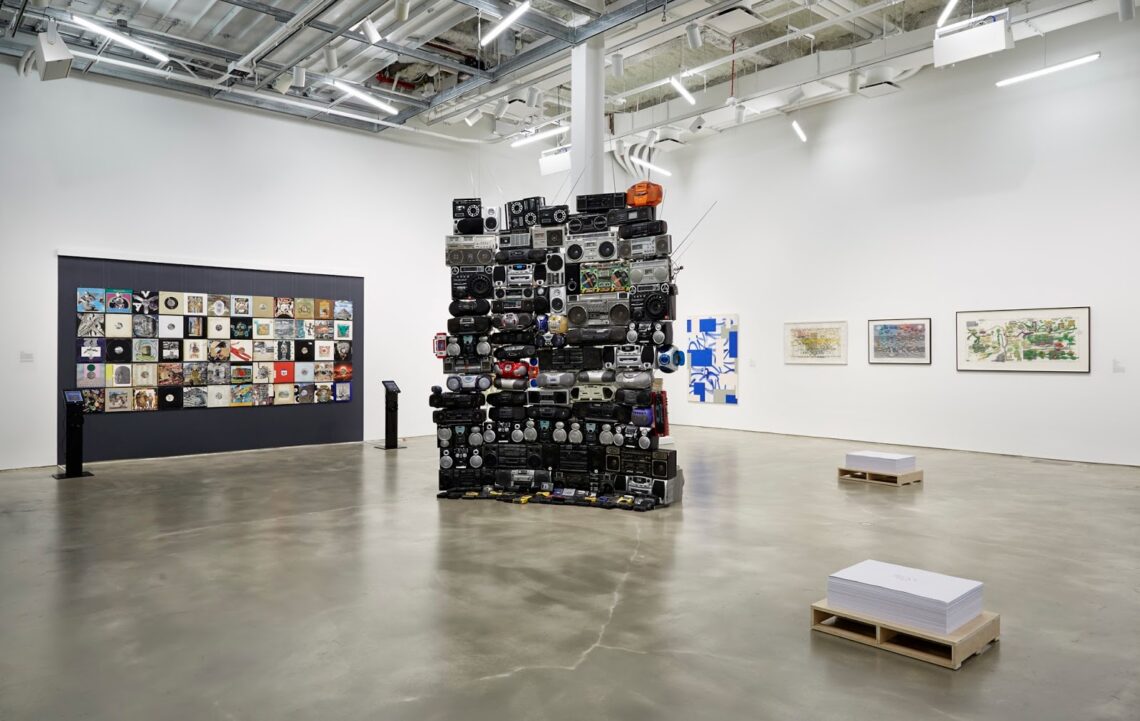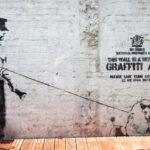When researching what the experience of listening to music is like today, I found a paper by Hesmondhalgh & MeierI (2018) which focused on the digitalisation of music and how the changes in technologies for musical consumption have been shaped and constructed by capitalism and a new wave neoliberal culture. They identified a shift form CE’s (Consumer Electronics) which included vinyl records, audio cassettes, compact discs, radio etc) to IT (Information Technologies) and how this has shaped the way in which music and culture are now experienced and shared. They argue that this shift is what caused music to go from “domestic consumption to personalised, mobile and connected consumption” (Hesmondhalgh & MeierI, 2018). These insights cemented my views on the commodification of music and the lost art of vinyl and initially helped me in defining the message I wanted to convey in my final piece.
Hesmondhalgh, D. and Meier, L.M., 2018. What the digitalisation of music tells us about capitalism, culture and the power of the information technology sector. Information, Communication & Society, 21(11), pp.1555-1570.
On further research, I wanted to look more broadly at the presentation of music within art. I was inspired by the work of Elizabeth Ferrer’s 2014 exhibition at the BRIC Gallery, New York, entitled ’Art into music’. This featured 12 artists whose work was inspired by a connection to music and sound.
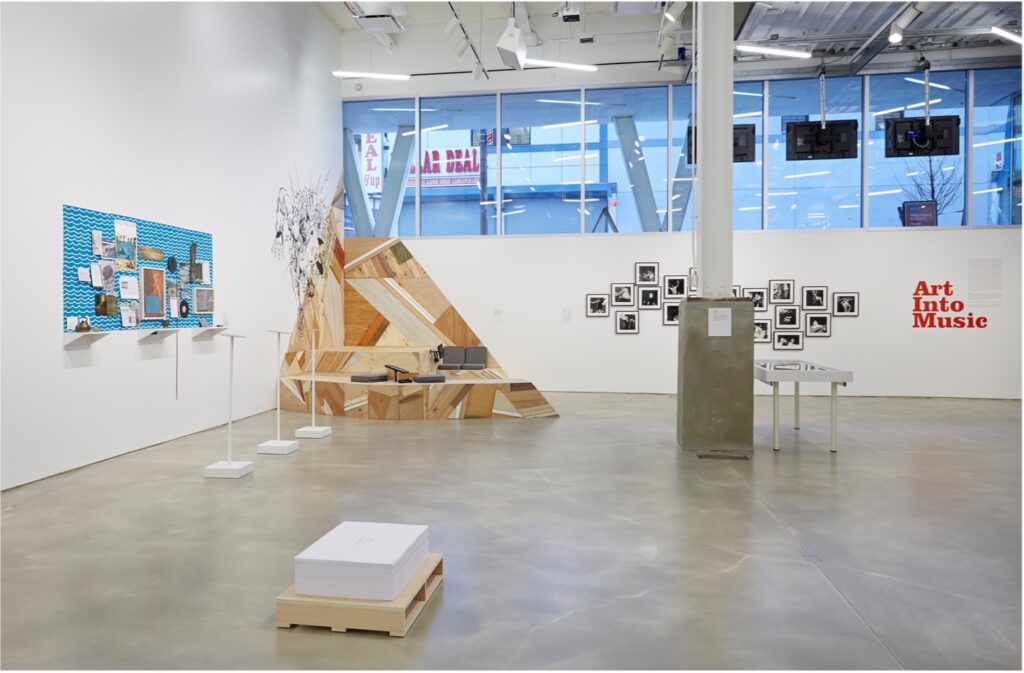
“Using varied media as installation, collage, public interventions, painting, text-based work, sculpture, and video. It examined the myriad ways in which music inspires contemporary artists, and explored the complex relationship between popular, mass media culture and so called “fine” art. Some artists worked with the material platforms of music, whether archaic or current, including 33 RPM records, and boomboxes. Others portrayed the culture of music or explored music as a formative element in our personal and cultural identities.”
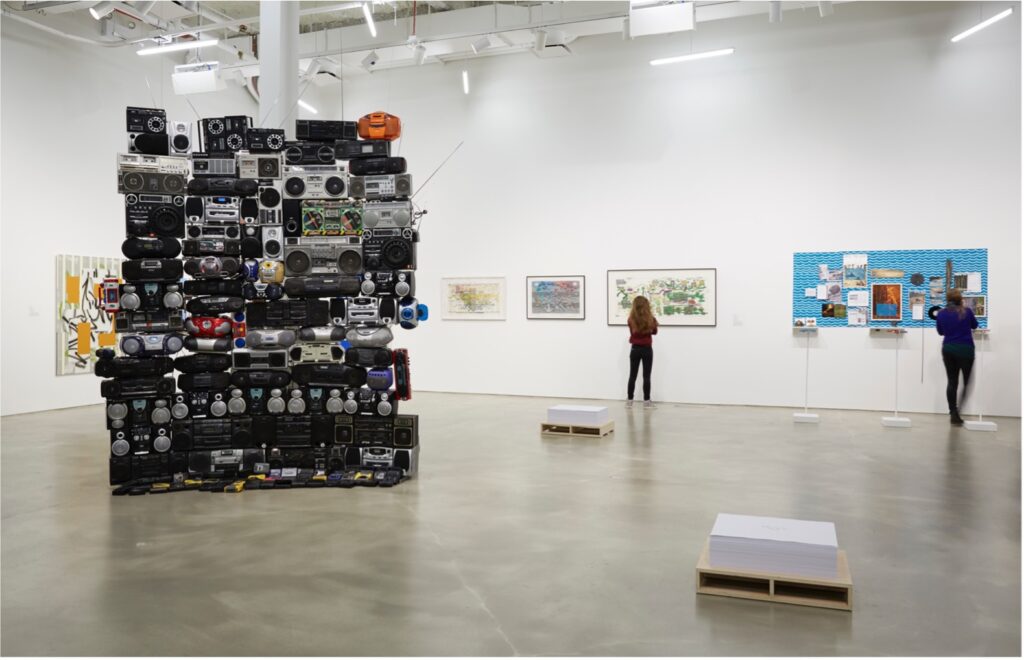
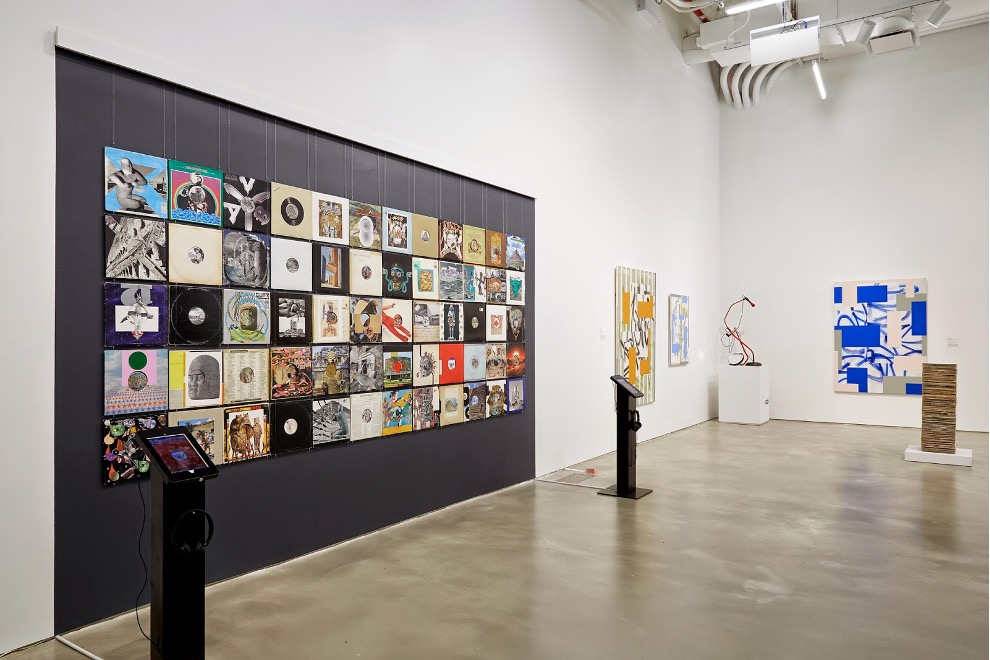
The way that sound and music had been presented in this exhibition, using the physical materiality of music, was valuable in understanding how I could display my own physical materiality, the vinyl record.
https://www.bricartsmedia.org/art-exhibitions/art-music
In researching my main piece I was inspired by the multidisciplinary work of South Korean multidisciplinary artist Nam June Paik (1932–2006) whose creative works over five decades explored the influence, interface and relationships between modern technologies and humans, society and nature. Paik had trained as a musician and he was fascinated by technologies used to transmit sounds and music, these became a recurrent theme in his art. His art practice transformed the relationship between art and technology. The diversity of art genres he used in his work is said to have made a profound influence in the fields of culture and art. Much of his focus was on innovative technologies and he used mediums such as video art, performance, installation, broadcasting, and sculpture. Paik often incorporated music and sound into his works and a few pieces stood out to me. The first work I encountered that referenced vinyl records was a sculpture entitled ‘Record Shishkebab’. This consisted of a series of vinyl records arranged to form the shape a shish kebab, each record representing a slice of meat on the vertical skewer. I thought this was an intriguing and exciting way to use vinyl, an everyday object, to represent something we come across in everyday life.
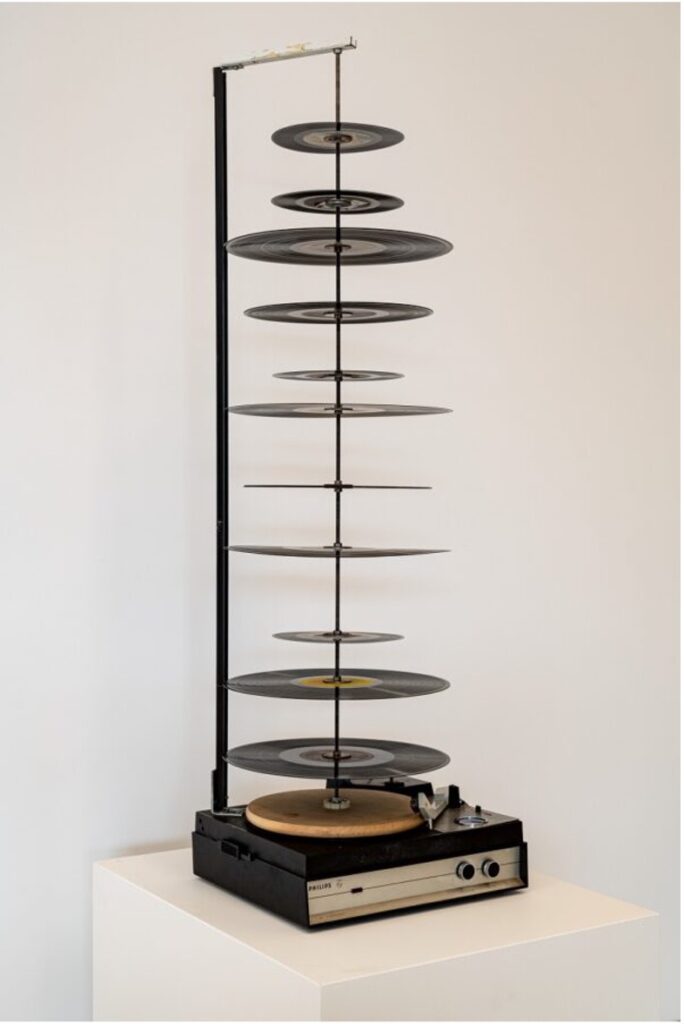
Random Access (Record Shishkebab) by Nam June Paik (1963)
https://artssummary.com/2021/05/07/nam-june-paik-at-san-francisco-museum-of-modern-art-sfmoma-may-8-october-3-2021/
He was also interested in how as new technologies replaced existing ones and many of his works played with this transitional relationship. For example in Elephant Cart (2001) he used a mixture of archaic media technologies (including Victrola gramophones) and new technologies. These are piled together onto a cart pulled by an elephant. This work encourages us to think about past and new forms of communication media and the relationship between them.
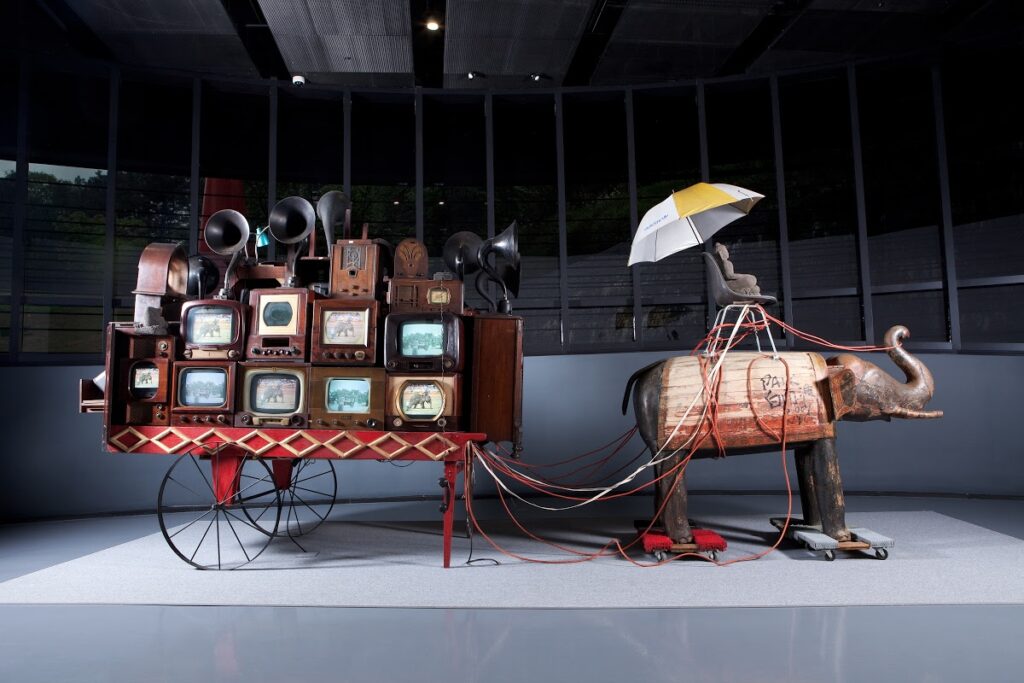
Elephant Cart, Nam June Paik (2001) https://prenjpac-en.ggcf.kr/archives/artwork/elephant-cart
Another Paik work, the sculptural installation ‘Victrola’ (2005), was very influential for my project. In this Paik placed this very early version of gramophone technology inside a piece of formal traditional furniture and smashed a vinyl record into pieces on the floor next to it. The furniture is covered in modern graffiti including a crudely scrawled image, of what could be a TV screen, on the inside of the Victrola’s lid. He thus presents the desperate fate of this once magnificent technology. The defacement and smashed vinyl record push home the message that this technology is now redundant and even ridiculed. This is then reinforced by positioning a plasma TV screen directly above it and showing an old black and white film of Paik himself breaking a vinyl record in a performance from many decades earlier. The presence of the plasma screen not only emphasises the message that both the Victrola and vinyl record have been mercilessly deposed but the film tells us that Paik had predicted this transition well before the newer technologies had even emerged. This work by Paik was the starting point for my journey on my final piece, it resonated with me and made me think of how I could represent music streaming platforms and the loss of the artists intentions for their music.
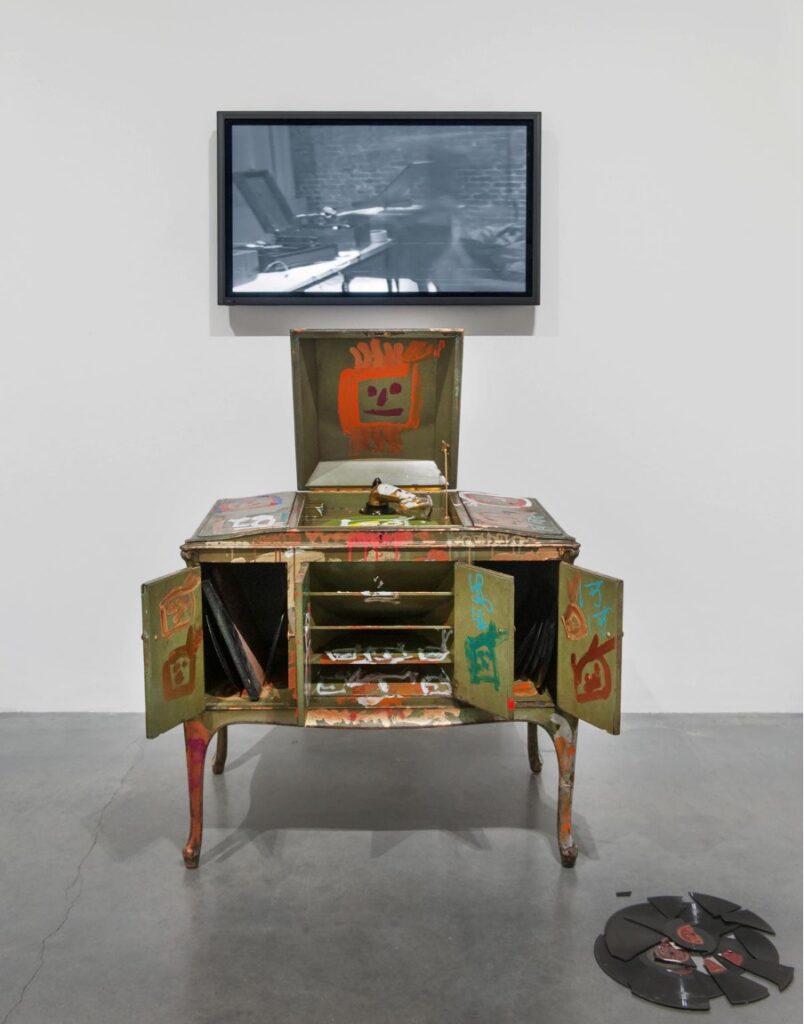
‘Victrola’, Nam June Paik, 2005, https://www.tate.org.uk/art/artists/nam-june-paik-6380
